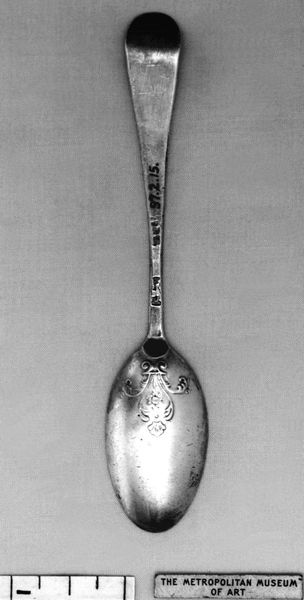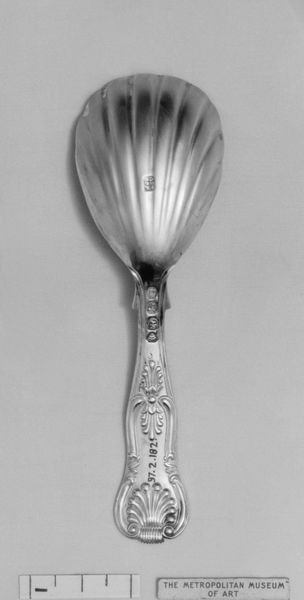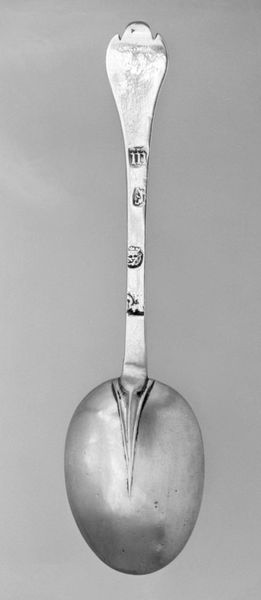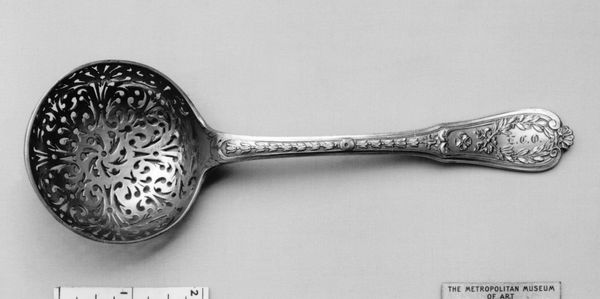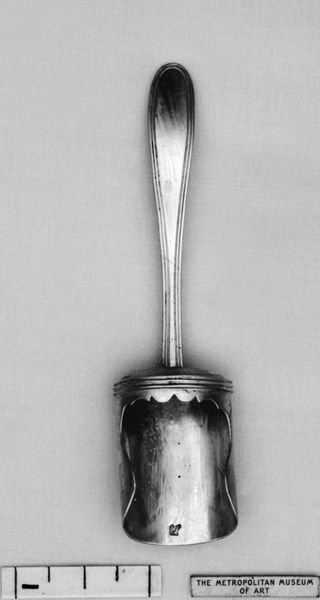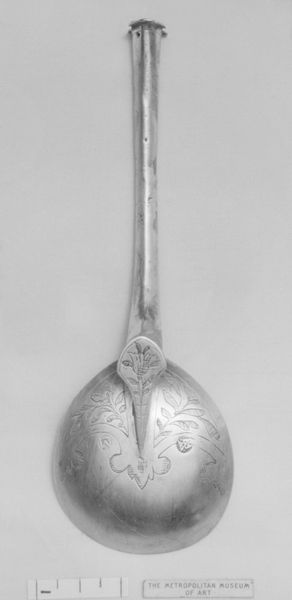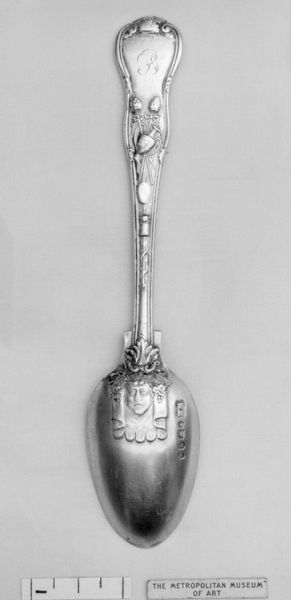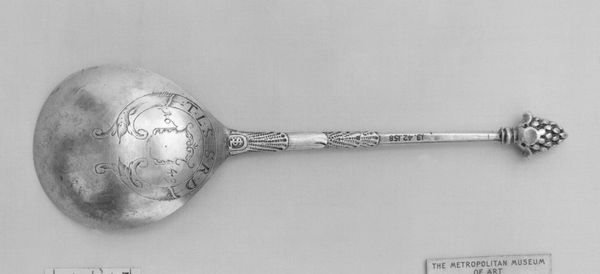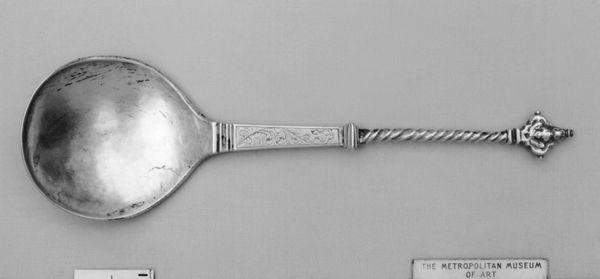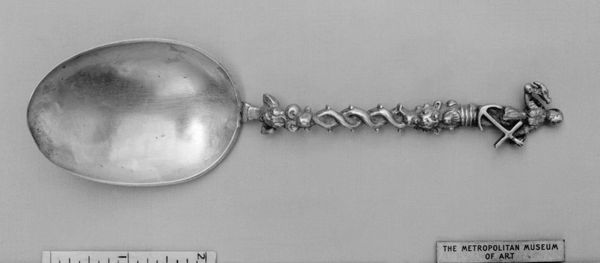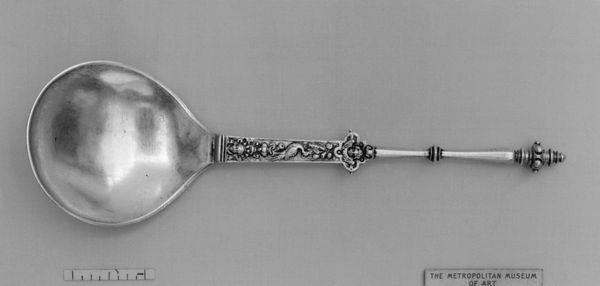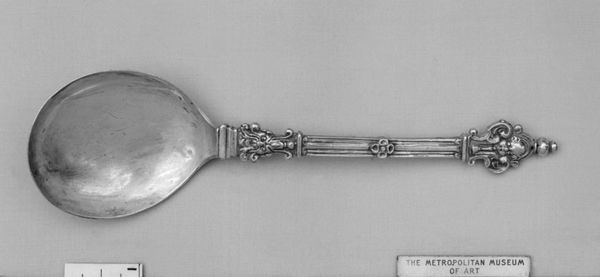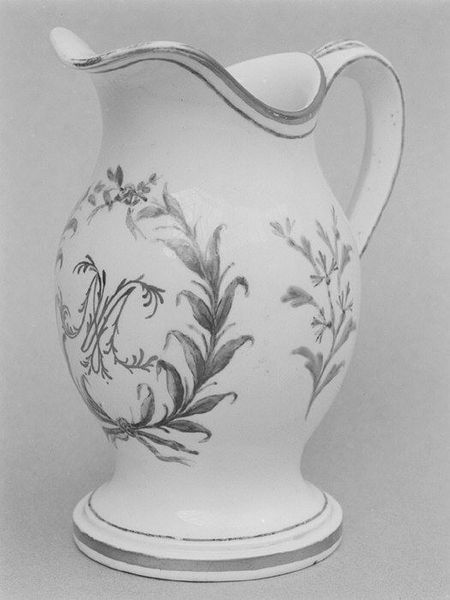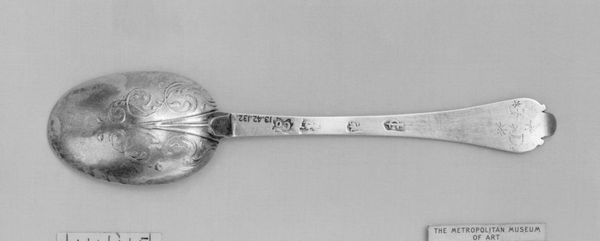
Dimensions: Length: 3 3/8 in. (8.6 cm)
Copyright: Public Domain
Editor: We are looking at a Caddy Spoon, made of silver, around 1803-1804 by Samuel Pemberton. The metal work is incredibly delicate, almost ethereal. I’m struck by how much detail can be included on something so small! How does it strike you? Curator: Indeed. Formally, this object presents a fascinating study in the interplay of positive and negative space. The embossed floral designs create a dynamic rhythm across the surface. Note the linear quality, defined by tiny dots and lines. How does that affect your understanding of the piece? Editor: I suppose the tiny lines accentuate the details and create further separation between each shape. Without the dotted line detail, the flora could look busy, or blend into each other. What do you think is the importance of negative space? Curator: Precisely! The negative space allows the eye to isolate and appreciate the form of each floral motif, directing our gaze. Further, consider how the spoon's shape--the curve of the bowl, the narrowing of the handle—contributes to its function and visual harmony. Editor: Yes, the spoon's form is quite satisfying; the curves invite you to use it. I noticed "II / R-M" is inscribed into the handle, so maybe this was a wedding gift or emblem for the owner. Curator: Such details can lend further appreciation of this historical work, though my analysis concerns visual components within the spoon: What sort of balance and hierarchy do you see established within its embossed floral patterns? How does it use symmetrical elements? Editor: Looking closely, there are repeating floral shapes throughout, but I can't detect exact symmetry; it’s similar but off by a fraction here and there. So while there's visual balance, it's not totally uniform, giving it organic charm. Curator: Excellent observation. A strict symmetry could make it static, yet it has dynamic movement, which shows skilled technique. That said, formal elements such as line and form still need close examination to gain insight into an artwork like this one. Editor: It’s fascinating to view art in terms of structure, like semiotics! This approach makes me look beyond surface appearance. Curator: By using formal analysis, even an object as simple as a spoon unveils greater subtleties!
Comments
No comments
Be the first to comment and join the conversation on the ultimate creative platform.
